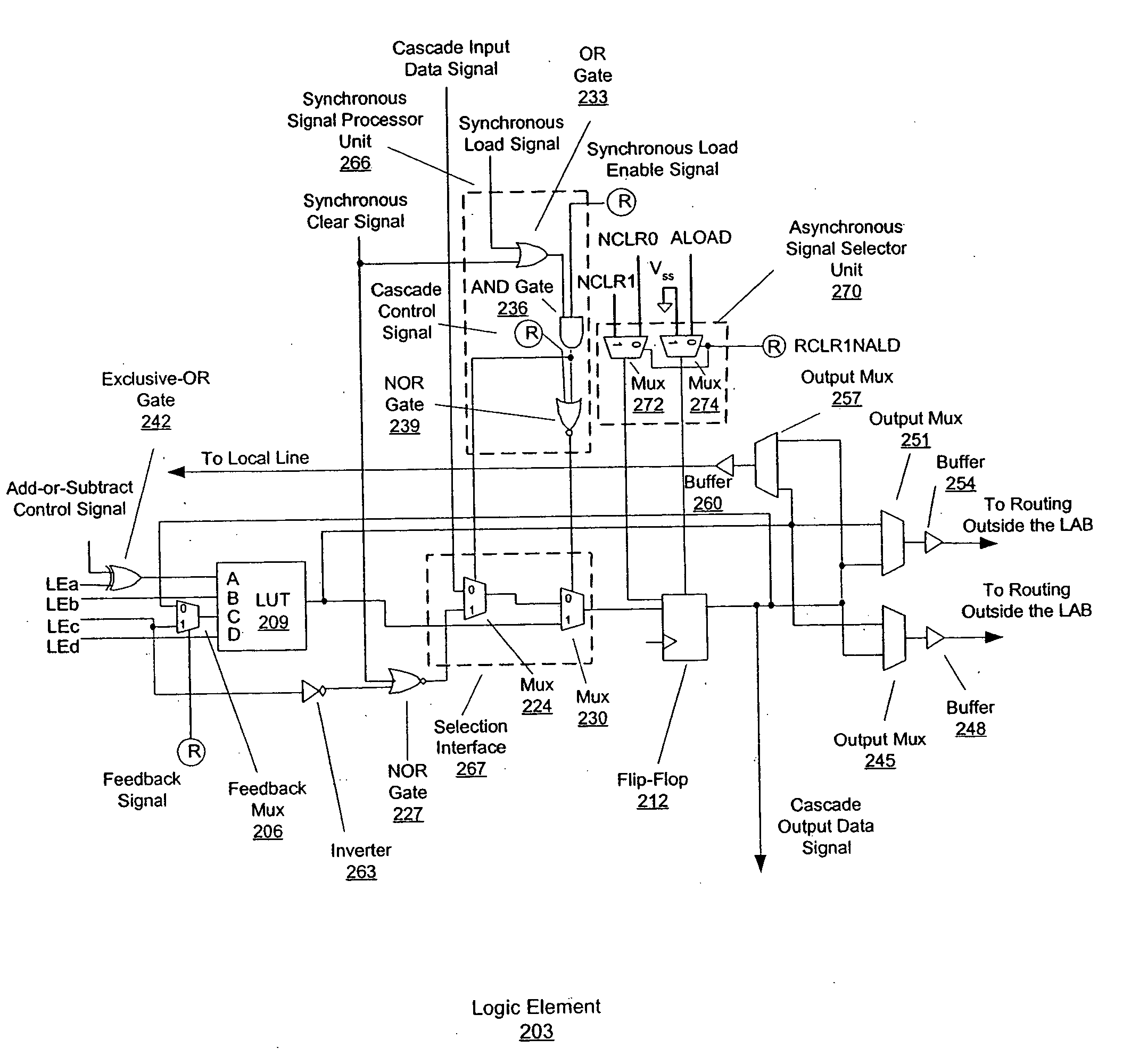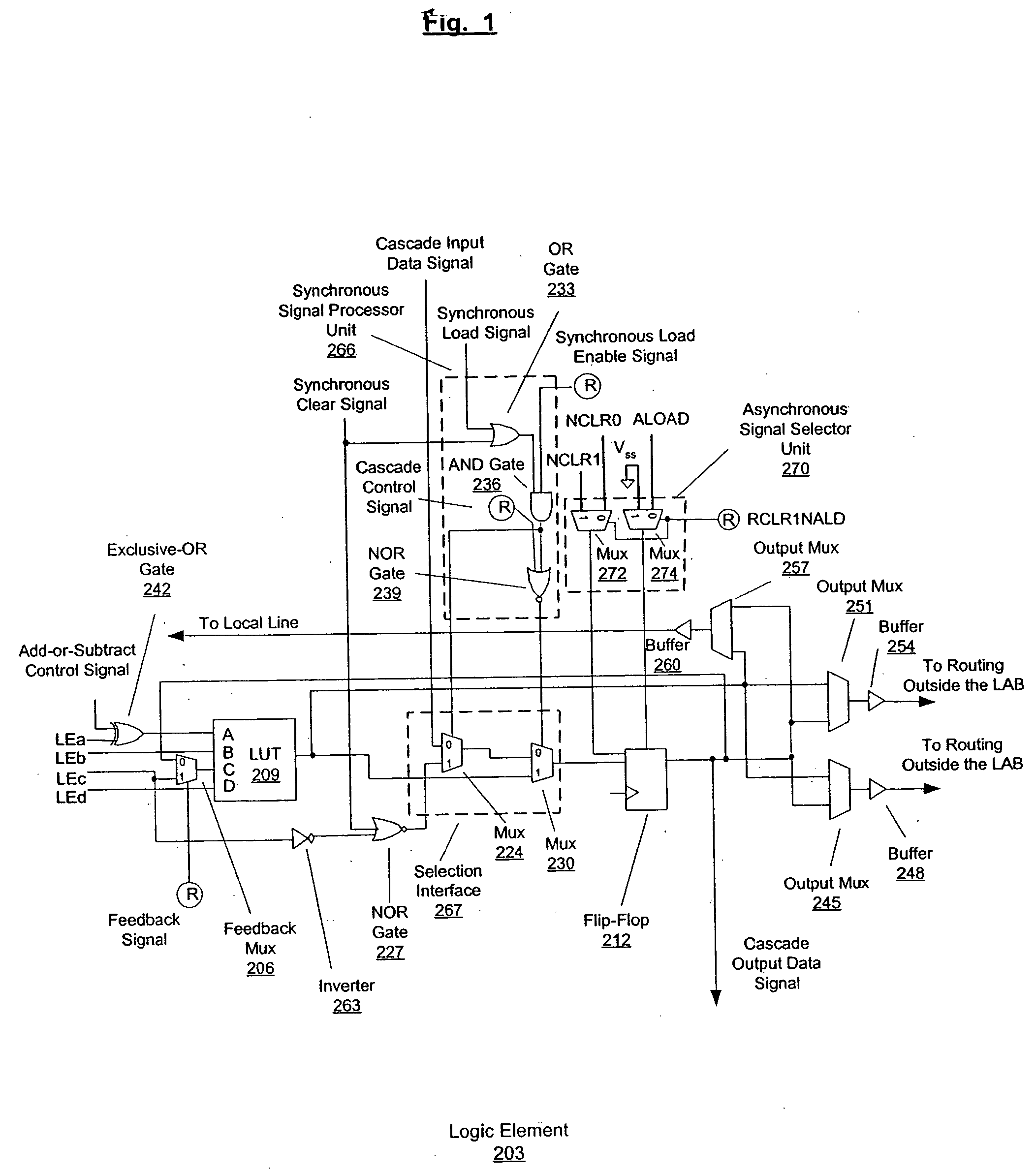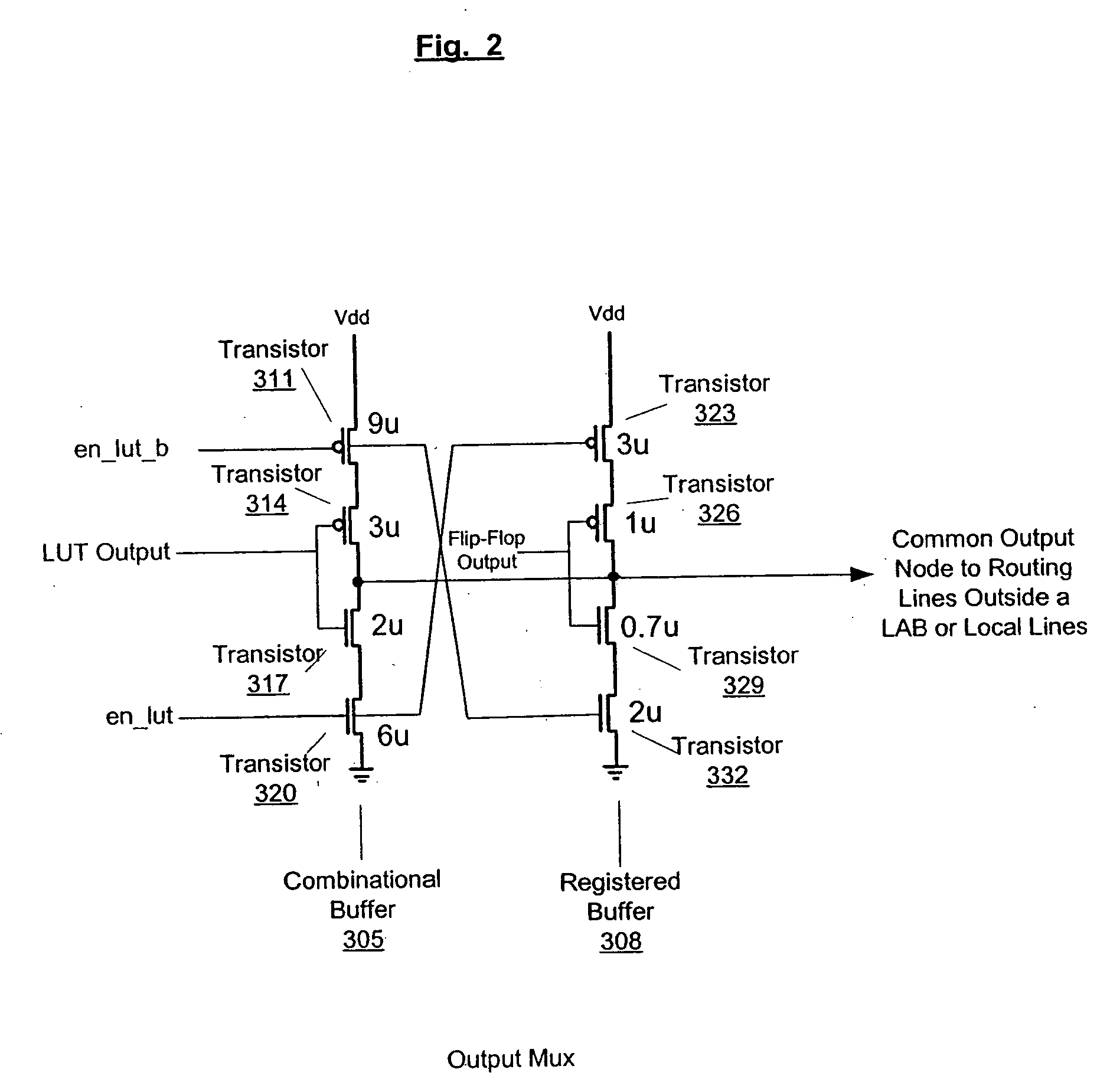Versatile logic element and logic array block
a logic array and logic element technology, applied in the direction of computation using denominational number representation, pulse technique, instruments, etc., can solve the problems of reducing the routability of the pld, requiring more area and slowness of the pld, and reducing the cost of the routability
- Summary
- Abstract
- Description
- Claims
- Application Information
AI Technical Summary
Benefits of technology
Problems solved by technology
Method used
Image
Examples
Embodiment Construction
[0026] An embodiment of the invention pertains to programmably connecting the flip-flops and the LUTs within the LE to provide versatile and flexible connections both within the LE and between LEs in the same LAB. Each LEIM selects inputs from a subset of the routing lines within the LAB. The pattern of connections of routing lines to multiplexers is arranged to reduce the need for extra LAB lines by increasing the number of distinct groups of the LAB lines while still maintaining a regular structure that can be readily implemented in an integrated circuit.
[0027]FIG. 1 shows an embodiment of a LE 203 according to the present invention. A first aspect of this embodiment pertains to flexibly coupling a logic function block (e.g., combinational logic such as a LUT 209) and a storage unit (e.g., a register such as a flip-flop 212) within a single LE 203. A selection unit that selects one of its inputs as an output, such as a feedback multiplexer (“mux”) 206, is programmably controlled ...
PUM
 Login to View More
Login to View More Abstract
Description
Claims
Application Information
 Login to View More
Login to View More - R&D
- Intellectual Property
- Life Sciences
- Materials
- Tech Scout
- Unparalleled Data Quality
- Higher Quality Content
- 60% Fewer Hallucinations
Browse by: Latest US Patents, China's latest patents, Technical Efficacy Thesaurus, Application Domain, Technology Topic, Popular Technical Reports.
© 2025 PatSnap. All rights reserved.Legal|Privacy policy|Modern Slavery Act Transparency Statement|Sitemap|About US| Contact US: help@patsnap.com



